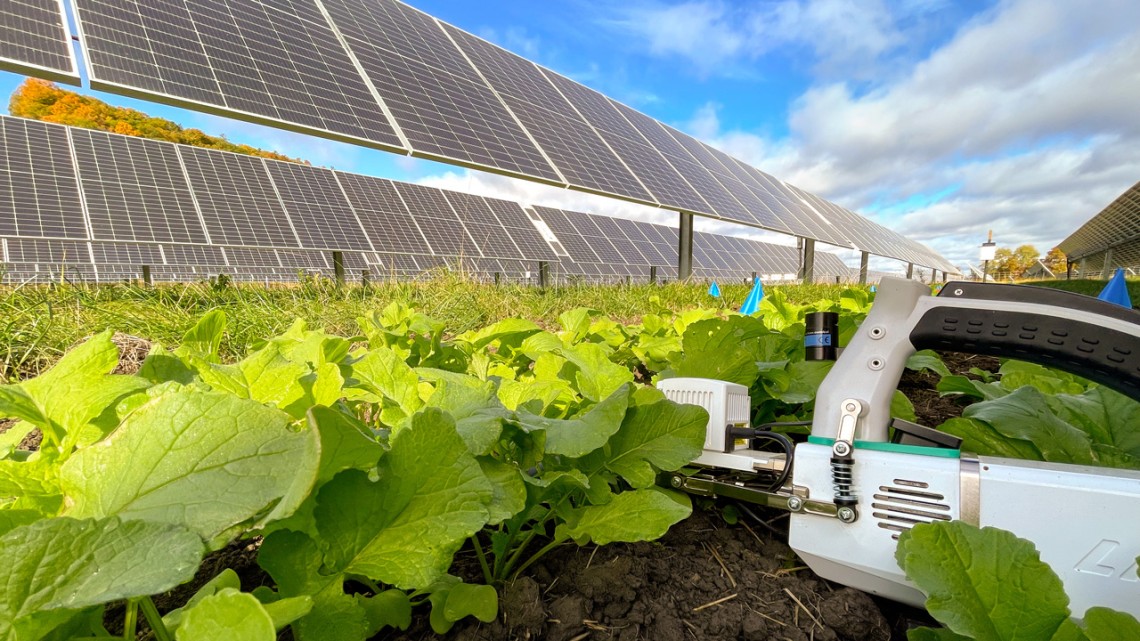
A series of studies by Cornell researchers is testing how crops might grow when planted between rows of solar panels on a solar farm in New York state.
By acquiring real data, researchers may be able to provide farmers and policymakers with important information, as growing crops between rows of solar panels to maximize dual land use will be increasingly critical, especially since New York’s utility-scale solar farms cover roughly 9,300 acres of land.
In the first of a series of studies, Cornell researchers tested a 2024 fall crop of radishes and radicchio grown between rows of solar panels. This year, the team of researchers is continuing experiments by planting strawberries, raspberries, winter wheat, soybeans, zucchini, peppers, chard and dry beans, starting in the spring, with promising early results.
“New York has an extremely strong agricultural legacy, and solar development on repurposed agricultural crop lands is going to have to meet farmers where they’re at,” said Matt Sturchio, a postdoctoral associate. “We need to be able to find solutions that either co-locate or find the most efficient land use synergies for solar development, so that’s why we’re doing this work.”
While crops are being grown successfully on solar farms in the Southwest and Midwest, New York is challenged by a short growing season and limited sunlight, and shade from solar panels.
In the current study, radishes, a root crop, and radicchio, a leafy crop, were planted within the roughly 20 feet of space that lies between rows of solar panels on a solar farm near Albany. The researchers found reductions in sunlight created by early morning and late afternoon shade stunted the fall crops, especially the radishes.
Not only was sunlight reduced in the test crops, but so was leaf temperature, which together led to lower carbon accumulation, or biomass. The change in biomass was especially pronounced in the radishes, due to a drop in below-ground production, as the plants allocated more resource to leaves that collect sunlight and exchange gases, Sturchio said.
“If growth is delayed somewhat in fall crops in the solar panels, that might mean that maybe we want to plant a little earlier, and plan to harvest later, which might not be bad, because it will space out the harvesting,” said Toni DiTommaso, professor in the School of Integrative Plant Science, and co-author of the study.
“We’re trying to grow a slew of these crops to see which ones have potential, so that we can provide data, science-based information to policymakers and to farmers who may be thinking of getting involved,” DiTommaso said.
In Europe, solar farm operators are starting to orient panels, so they are parallel with the sun’s rays, instead of perpendicular. “Instead of catching all of the sun’s rays, they allow light to pass through, so they’re creating minimal shade,” Sturchio said. Increasing sunlight, even for an extra hour a day, could change the biomass loss that the study found, he said.

